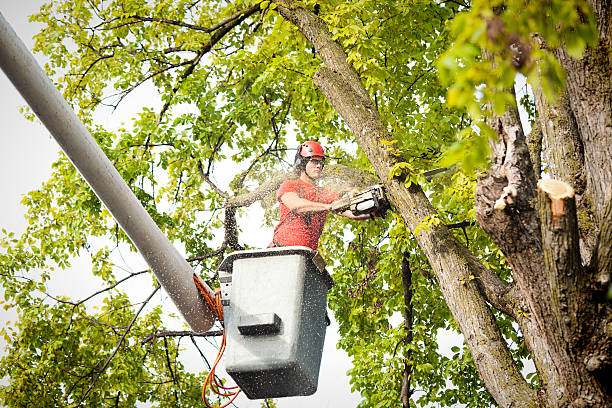Trees provide numerous benefits, such as shade, beauty, and environmental benefits. However, there are times when tree removal is necessary. Whether the tree is dead, diseased, or poses a safety hazard, removing a tree requires careful planning and execution. In this article, we will discuss what you need to know about tree removal.
When is Tree Removal Necessary?
Dead or Dying Trees
Dead or dying trees pose a safety hazard and should be removed as soon as possible. A dead tree can fall unexpectedly, causing damage to property or injuring people.
Diseased Trees
A tree that is diseased beyond repair may need to be removed to prevent the spread of the disease to other trees.
Safety Hazard
Trees that pose a safety hazard, such as those with large branches overhanging structures or power lines, should be removed to prevent damage or injury.
Property Development
Trees may need to be removed to make way for new construction or to clear land for other purposes.
Planning for Tree Removal
Hire a Professional
Tree removal is a dangerous task that should only be performed by a professional arborist. They have the knowledge, skills, and equipment necessary to remove trees safely and efficiently.
Obtain Necessary Permits
Depending on where you live, you may need to obtain permits or approvals from local authorities before removing a tree. A professional arborist can help you navigate the permit process.
Consider the Tree’s Surroundings
When planning for tree removal, consider the tree’s surroundings. Is there enough space to safely fell the tree? Are there structures or other trees that may be damaged during the removal process? A professional arborist can assess the situation and plan accordingly.
Tree Removal Process
Inspection
Before removing the tree, the arborist will inspect the tree to determine the best approach for removal. This includes assessing the tree’s height, weight, and location.
Tree Felling
The arborist will then use specialized equipment to safely fell the tree. They may use ropes, pulleys, and a chainsaw to carefully cut the tree into sections.
Stump Removal
Once the tree is removed, the stump will need to be removed as well. The arborist may use a stump grinder to grind the stump down to below ground level.
After Tree Removal
Clean-Up
After the tree is removed, the arborist will clean up the debris and remove it from the property. They may also grind up the branches and leaves into mulch, which can be used for landscaping.
Plant a New Tree
If you removed a tree for property development or other reasons, consider planting a new tree in its place. Trees provide numerous benefits, and planting a new tree is a great way to help the environment.
Conclusion
In conclusion, tree removal is a necessary task that should only be performed by a professional arborist. Proper planning and execution are crucial to ensure safety and prevent damage to property. Remember to always consider planting a new tree after removing one to continue reaping the benefits trees provide.









